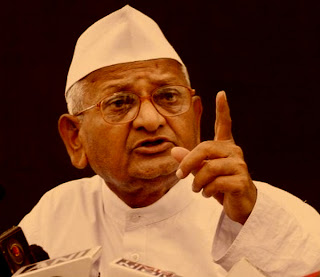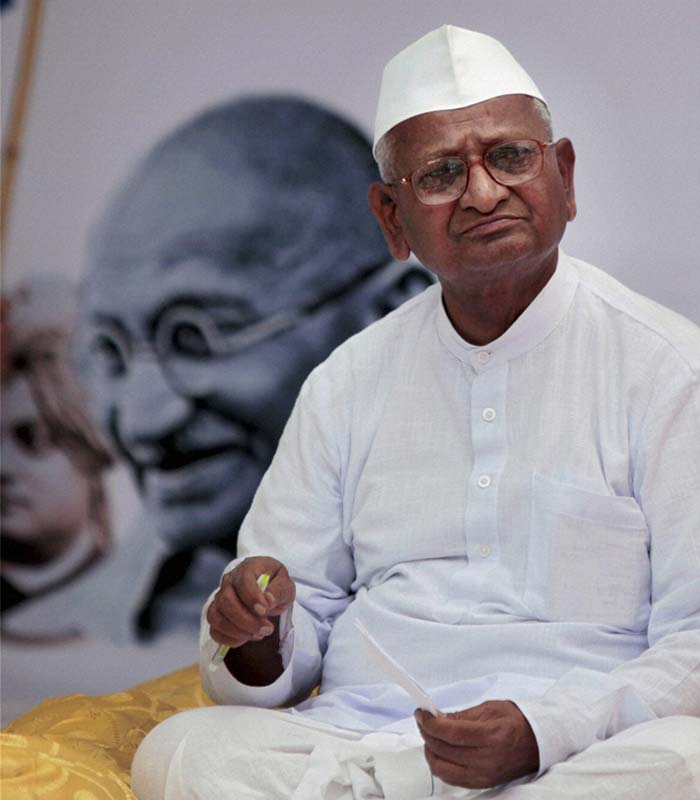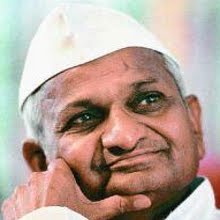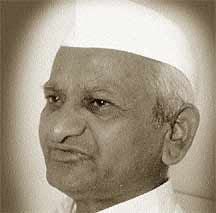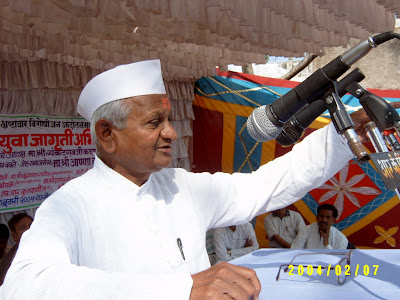
Anna Hazare Biography
Kisan Baburao Hazare(Marathi: किसन बाबुराव हजारे) (born 15 June 1937), popularly known as Anna Hazare About this sound pronunciation (Marathi: अण्णा हजारे), is an Indian social activist and anarcho-pacifist who is especially recognised for his contribution to the development and structuring of Ralegan Siddhi, a village in Parner taluka of Ahmednagar district, Maharashtra, India and his efforts for establishing it as a model village, for which he was awarded the Padma Bhushan葉he third-highest civilian award the government of India in 1992.
After leading a number of nonviolent protests in Maharashtra state against corruption, Hazare started a fast unto death on 5 April 2011 to exert pressure on the government of India to enact a strong anti-corruption act as envisaged in the Jan Lokpal Bill, a law to establish a Lokpal (ombudsman) with the power to deal with corruption in public offices. The fast led to nationwide protests in support of Hazare. The fast ended on 9 April 2011, the day after all of Hazare's demands were agreed by the government of India. The government issued a gazette notification on the formation of a joint committee (of government and civil society representatives) to draft an effective Lokpal Bill. According to the July 2011 findings of a CNN-IBN- Hindustan Times Opinion poll, the Indian public prefers Anna Hazare to the Government of India to tackle corruption, and also see him as more trustworthy than the government. According to an Indian daily English newspaper Daily News and Analysis痴 annual list of top 50 most influential people for 2011, Anna Hazare is the most influential person in Mumbai.
Visit Magazine Buzz for Daily Updated Hairstyles Collection


